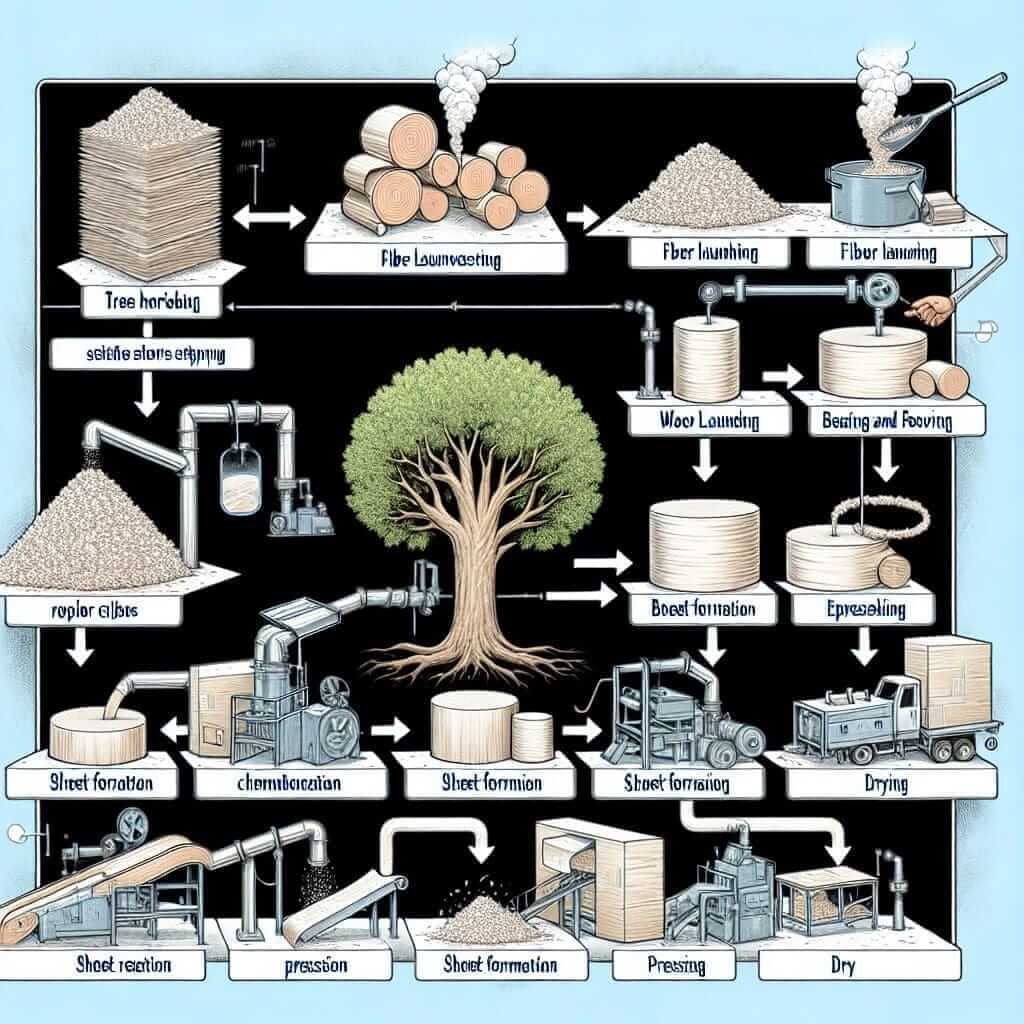As an IELTS instructor with over two decades of experience, I’ve encountered countless essay topics. One that frequently surfaces, particularly in the IELTS Writing Task 1, is the process of papermaking. This topic might seem deceptively simple, but to truly excel, you need a strong grasp of descriptive vocabulary, process sequencing, and clear, concise writing.
This guide will equip you with the necessary tools to confidently tackle the “how paper is made” IELTS writing task, boosting your band score and leaving you feeling prepared and confident.
Understanding the Task and its Significance
Before we delve into the intricacies of papermaking, let’s understand why this topic appears in the IELTS Writing test. The purpose is to assess your ability to:
- Describe a process clearly and accurately: Can you break down a complex process into manageable steps using appropriate sequencing words?
- Utilize a wide range of vocabulary: Do you possess a diverse vocabulary to describe materials, machinery, and actions involved in papermaking?
- Control grammatical structures: Can you accurately use passive voice, present tense, and other grammatical structures often required when describing a process?
Describing the Papermaking Process
To effectively describe how paper is made, familiarize yourself with the key stages involved:
-
Wood Harvesting: Trees, primarily softwood conifers, are harvested and transported to a paper mill.
-
Pulping: The wood is debarked and chipped before being processed into pulp through mechanical, chemical, or a combination of both methods.
-
Pulp Treatment: The pulp undergoes cleaning, bleaching, and mixing with water and other additives to achieve desired qualities.
-
Paper Formation: The pulp slurry is spread onto a moving wire mesh screen. Water drains, leaving a thin layer of fibers.
-
Pressing: The wet paper sheet moves through rollers to squeeze out excess water and compress the fibers.
-
Drying: The paper sheet passes through heated rollers, evaporating remaining moisture and increasing its strength.
-
Finishing: The paper may undergo further treatments like calendaring (smoothing) or coating, depending on its intended use.
 paper making process
paper making process
Example from an IELTS Writing Task 1
You might encounter a diagram or flowchart illustrating the papermaking process. Here’s how you could describe it:
“The diagram illustrates the process of paper production. Initially, trees are harvested and transported to a mill, where they undergo debarking and chipping before being converted into pulp. The pulp is then thoroughly cleaned and bleached before being mixed with water and additives. Next, the pulp slurry is spread onto a moving wire mesh screen, allowing water to drain and form a thin sheet of paper fibers. This sheet is then passed through rollers to remove excess water and compress the fibers. Finally, the paper is dried using heated rollers, followed by additional finishing treatments.”
Tips to Enhance Your Writing
- Use sequencing words: Employ words like “initially,” “subsequently,” “following,” “afterward,” and “finally” to ensure a logical flow of information.
- Use passive voice: Since the focus is on the process, passive voice (“wood is harvested,” “paper is dried”) is more appropriate than active voice.
- Be precise with vocabulary: Use specific terms like “coniferous trees,” “pulping methods,” “wire mesh screen,” and “calendaring” instead of general words.
- Practice with sample questions: Familiarize yourself with various IELTS Writing Task 1 questions related to process descriptions.
Conclusion
Mastering the “how paper is made” IELTS Writing topic requires a combination of vocabulary, grammatical accuracy, and a clear understanding of the process itself. By studying the steps involved, practicing with sample questions, and implementing the tips provided, you’ll be well-equipped to achieve a high band score on your IELTS exam. Remember, consistent effort and targeted practice are key to success!


